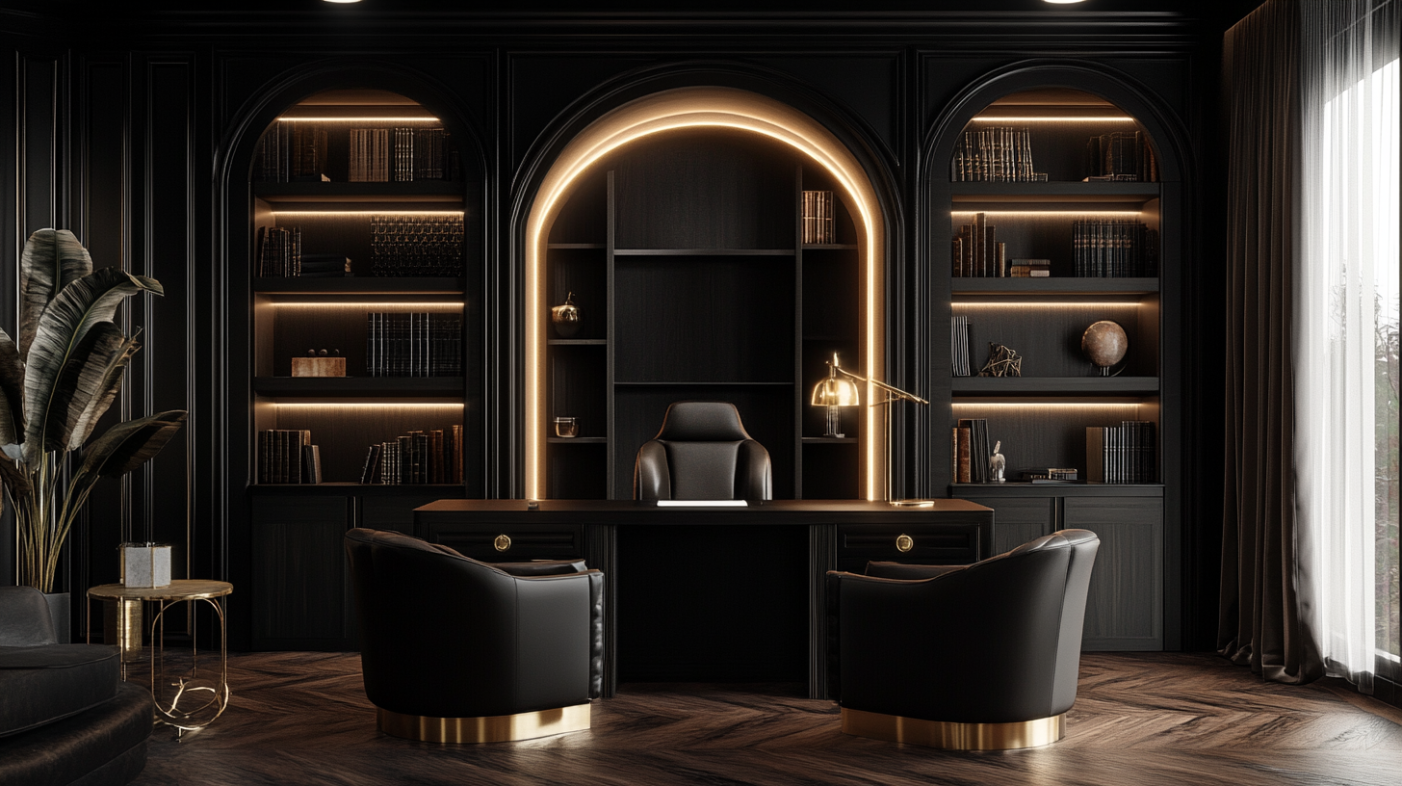Arched Cabinet Ideas: Inspiration and a Practical Selection Guide
- PA Home
When linear interiors start to feel cold or repetitive, introducing curvature can completely shift the atmosphere. Arched cabinets—defined by their soft, rounded tops—offer more than visual relief; they reflect a return to classical forms reimagined for contemporary living. Whether you’re aiming for a vintage statement or an organic-modern vibe, arched cabinets balance beauty and utility, turning basic storage into architectural poetry.
This guide explores different styles, material choices, and room applications to help you choose the right arched cabinet for your home or project.
I. What Makes Arched Cabinets Special?
Arched cabinets aren’t just a fleeting trend—they’re a response to our desire for more tactile, emotionally resonant interiors. The curved form gently guides the eye upward, introducing a sense of fluidity often missing in traditional rectangular casework. Unlike stark minimalism or maximalist chaos, arched silhouettes can live in both worlds. They soften sharp angles, create movement, and immediately signal intentional design.
From wall-mounted curios to freestanding bar units, the versatility of arched cabinets makes them viable in nearly any room. And thanks to a growing number of manufacturers and custom workshops, you can find options across every price point and aesthetic.
Houzz offers excellent insights on various cabinetry styles, including arched designs that can elevate your home’s interior.

II. Style Breakdown: Understanding Design and Materials
Design Variations
- Glass-Front Arched Cabinets
Ideal for dining rooms or living spaces, these cabinets bring lightness and transparency to the layout. Fluted or reeded glass offers a semi-private view, obscuring clutter while still showcasing silhouettes. Use them to frame curated vignettes—ceramics, glassware, or books—like a mini gallery. - Solid-Door or Rattan Arched Cabinets
For spaces requiring more concealed storage (entryways, bedrooms), go for a solid panel. Rattan or cane inlays within a wood arch offer a lovely interplay of opacity and texture, making these cabinets functional and decorative.
Material Options
- Solid Wood (Oak, Walnut, Maple)
Solid hardwoods bring warmth, heft, and timeless value. Oak is popular for its visible grain and natural tones, while walnut leans darker and more refined. These cabinets age gracefully and work well in heritage or luxury spaces. - MDF and Engineered Wood
Best for painted finishes, these materials allow clean, consistent curves. They’re cost-effective and more flexible for DIY-style customization. Ideal for renters or trend-driven updates. - Metal and Glass Hybrid
If your space leans contemporary or industrial, consider slim aluminum or iron frames topped with arched glass. These units feel light and architectural, especially when paired with neutral walls and minimal styling.
III. Arched Cabinet Design Inspirations
Let’s explore how you can apply different types of arched cabinets throughout the home:
1. Black Arched Cabinet
A matte black cabinet with arched detailing adds instant drama. Whether styled with brass pulls or minimal hardware, it commands attention. Try placing it in a study with leather armchairs or in a monochrome dining area—it brings gravity and elegance.
2. Arched Display Cabinet
Perfect for collectors and stylists. Choose a tall version for a dining room or a shorter variant for a hallway console. Layer objects in odd numbers, vary textures, and use the curvature to create visual rhythm across shelves.
3. Arched Cabinet with Glass Doors
When transparency and order meet, you get a cabinet that functions like a window into your personality. Use these in kitchens for displaying glassware, or in bathrooms with color-coded towels. Add a mirror or wallpapered back for added depth.
4. Arched Storage Cabinet
These units balance closed and open sections—concealed drawers below, open arch display above. In small spaces, this dual-use design reduces clutter while still contributing to the aesthetic narrative of the room.
5. Arched Bar Cabinet
Think beyond the bar cart. An arched bar cabinet with inner wine slots, pull-out trays, and mirrored backing elevates your hosting game. It’s equally suited for formal entertaining or a moody corner in your media room.
6. Arched Bookcase Cabinet
For bibliophiles or stylized offices, an arched bookcase gives books a home within sculptural boundaries. Use the verticality to enhance the room’s height. Pair with downlights for soft evening ambiance.
7. Arch Cabinets / Arch Storage Cabinet
Minimal versions with recessed arch cutouts or open shelving suit transitional spaces—hallways, mudrooms, or even kids’ rooms. Paint them the same color as the wall to maintain flow while adding subtle interest.
8. Arched Wall Cabinet
Wall-mounted versions are great where floor space is limited—think bathrooms, above buffets, or even over a writing desk. Choose curved wood doors or inset glass panes for a tailored, built-in feel.
9. Back Panel Treatments
A cabinet’s interior back can become its own design moment. Line it with vintage mirror for glamor, textured wallpaper for pattern, or use limewash paint to echo natural textures.
10. Styling Tips
Balance weight and scale. Heavy ceramic vases or bowls should go low; lighter pieces like candles, figurines, or greenery belong at eye level. Use negative space generously—it allows the arch’s form to shine.
11. Lighting Solutions
Integrated lighting makes a huge difference. Use warm LED strips or puck lights to highlight curves, and consider dimmable options for mood control. For display cabinets, this turns the whole piece into a functional sculpture.
IV. Function and Fit: What to Measure and Why It Matters
- Height & Width
Always measure your wall space before selecting a cabinet. Arched tops extend higher than flat units—don’t forget ceiling clearance, crown molding, or HVAC grilles. - Depth
For decorative uses, 10–12 inches is enough. For storage of books, kitchen items, or linens, aim for 14–18 inches. - Adjustability
Shelves that can move or be removed entirely allow greater flexibility, especially for oversized books, tall bottles, or decorative pieces. - Storage Strategy
Choose units that combine open display and closed storage. This gives visual breathing room while maintaining practicality—because yes, you’ll still need a place for router boxes and extension cords.
V. Custom vs. Prefab: Which One’s Right for You?
- Prefab Cabinets
Widely available through major retailers like IKEA, and Wayfair. They’re budget-conscious, typically flat-packed, and come in limited finishes and sizes. Ideal for renters or temporary solutions. - Custom-Made Arched Cabinets
If you’re designing a built-in or matching to existing millwork, custom is the way to go. You can choose arch profile (Roman, Gothic, elliptical), materials, and finishes that perfectly fit your room. Yes, it’s more costly and time-consuming—but the result feels bespoke and grounded.
VI. Maintenance & Longevity
- Glass Cleaning
Use lint-free microfiber cloths and ammonia-free spray to avoid streaks. - Wood Protection
Apply beeswax or Danish oil depending on the finish. Avoid direct sunlight to prevent discoloration. - Hardware
If hinges creak or doors don’t close flush, check alignment and apply graphite or silicone lubricant as needed.
VII. Conclusion
Arched cabinets are more than a design trend—they’re a reflection of changing values in interior design: softness over severity, character over conformity. Whether you incorporate one as a standalone showpiece or integrate a series of built-ins throughout your home, arched cabinetry delivers emotion, style, and function in a beautifully curved package.
So next time you find yourself reaching for another boxy bookcase, ask yourself—could an arch bring the balance your space deserves?
Ready to elevate your space with custom arched cabinets? Contact PA Home today for expert design and high-quality cabinetry solutions tailored to your style.
FAQs
What are the benefits of using an arched cabinet in home decor?
How do I choose the right arched cabinet for my living room?
Are arched cabinets suitable for small spaces?
What materials are best for arched cabinets?
How do I maintain my arched cabinet?



